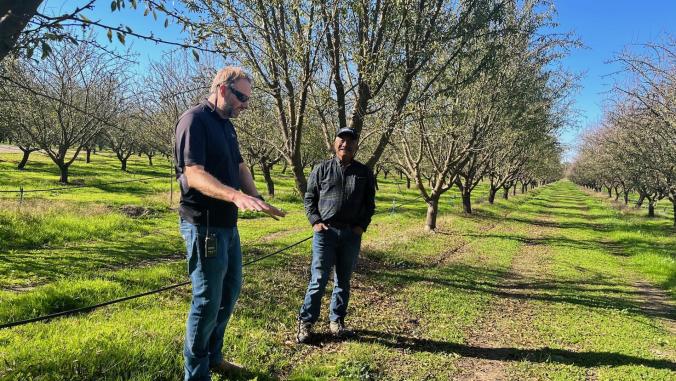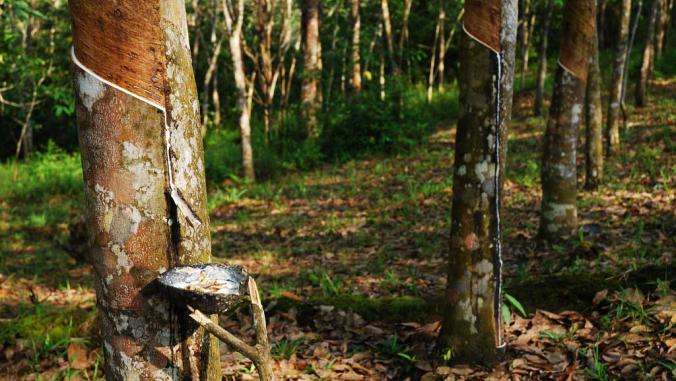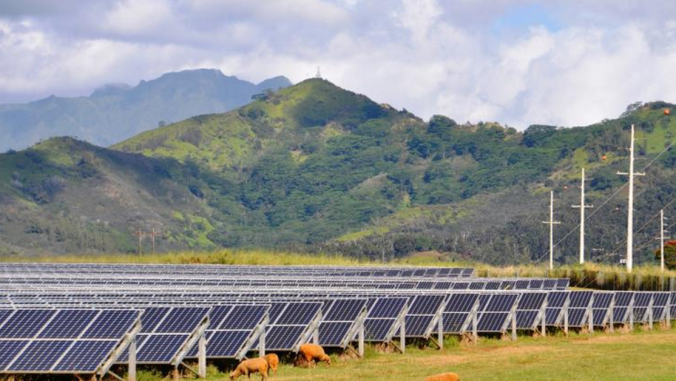Why PepsiCo aims to repair watersheds in Latin American cities
The beverage and food giant aims to restore 600,000 cubic meters of aquifer lands with the help of the Nature Conservancy.

Rain falls steadily for five months a year in Guatemala, filling lakes and greening lush tropical forests. Yet a shortage of water is so severe that Guatemalans frequently take to the streets to protest about it.
In Monterrey, Mexico, flooding has become expected in the rainy season and drought in the dry season. But it wasn't so severe before forestland in the surrounding watershed was cut back for development and agriculture.
Watersheds act as sponges for rain, holding it for when needed in dry seasons, while a watershed’s trees absorb carbon from the air and provide habitat for animals. They clean water and air, as part of the natural capital the earth provides.
But they are being eroded, particularly in Latin America where the edges of tropical rain forests — the lungs of the world — are giving way to clear cutting for growing crops and building. Water shortages and stresses are common in Guatemala City, Monterrey, Mexico City and elsewhere, a big problem for people and companies there.

But it is the year of the U.N.'s Sustainable Development Goals, when numerous large businesses and countries have agreed to work on, including SDG No. 6: "Ensure access to water and sanitation for all."
PepsiCo on Tuesday is announcing a project to replenish the watersheds around five of Latin America’s biggest cities and most water-stressed regions: Mexico City and Monterrey, Mexico; Sao Paulo, Brazil; Bogota, Colombia; and Guatemala City, Guatemala.
The company's $3 million "Water for the Planet" project aims to restore 600,000 cubic meters of aquifer land — equivalent to what could hold 158 million gallons of water — and will be carried out in partnership with the Nature Conservancy (TNC). The two organizations predict this will take seven years. But it could provide proof of a nature-driven, low-cost way to restore water quality, abate floods and droughts and boost water security.
Laxman Narasimhan, CEO of PepsiCo Latin America, told GreenBiz, "What we are doing is focusing on water security in five (geographic) areas. These are clearly water-stressed areas."
They are also where PepsiCo has manufacturing operations and franchisees that run bottling operations. Guatemala City, for instance, is the company’s Central America hub.
Replenishing watersheds will help everyone in the area.
"Replenishing watersheds will help everyone in the area." Narasimhan said. "It is our commitment to the local community. We are using water in these areas so we want to replenish as much of it as we can... Rather than withdrawing water in one community and replenishing it in another, we want to be responsible to the community."
It's not a new approach. "Watersheds are a very good example of how green infrastructure can replace or is better than gray infrastructure," said Mark Tercek, president of TNC, which has been working in Latin America to restore aquifers, watersheds and tree protection. For instance, building levees or cement walls to hold back floods would not provide relief from drought nor act as carbon sinks the way forests do.
"A project like this with PepsiCo is so important because ultimately we want to show the world there is an opportunity to invest in green infrastructure broadly," he said.
Specific actions
What will the watershed restoration and replenishment work look like on the ground? It includes replanting trees and working with farmers and city leaders to avoid taking down trees where possible in favor of conservation methods of farming.
Watersheds are a very good example of how green infrastructure can replace or is better than gray infrastructure.
"We will work on the reparation of ground water aquifers. We are seeing that in rainy seasons the supply of water is far higher than the capacity of the ground to infiltrate water for groundwater recharge" because the ground or soil has lost its capacity to absorb, said Hugo Contreras, regional director for freshwater in TNC Latin America.
In Bogota, where upland wetlands in the past acted as natural filtration of sediment as water flows down hillsides, the wetlands need to be restored. The water supply to the city is full of sediment, Contreras said.
Gabriela de la Garza, sustainability director for PepsiCo Latin America, said, "We are looking at how we can contribute to the long-term sustainability of the aquifers from which we draw water to make sure the communities have enough water."
The project should supply more water and cleaner water to an estimated 9 million people spread over the five cities. Ultimately, under PepsiCo's goals, it hopes to supply safe water for 25 million people.
"It is not only for access to water but for the sustainability of the watershed and water supply from which people draw water for their homes, and [from which] companies draw water for their operations," she said.
De la Garza said the work is part of PepsiCo’s Performance with Purpose 2025 Agenda, announced last month to set out sustainability goals and plans for the next 10 years. It calls for having a "positive water impact" or bringing about water security and enhancing water supply and quality to people and cities in the areas where it does business, not just for its own operations.
PepsiCo aims through its sustainability goal to provide access to safe, clean water to 25 million people.
Through technology and water use efficiency, it has cut down water use in its operations by 26 percent in the past decade. Now it aims to cut use an additional 25 percent. In its food operations in Mexico, PepsiCo has improved water efficiency by 47 percent.





